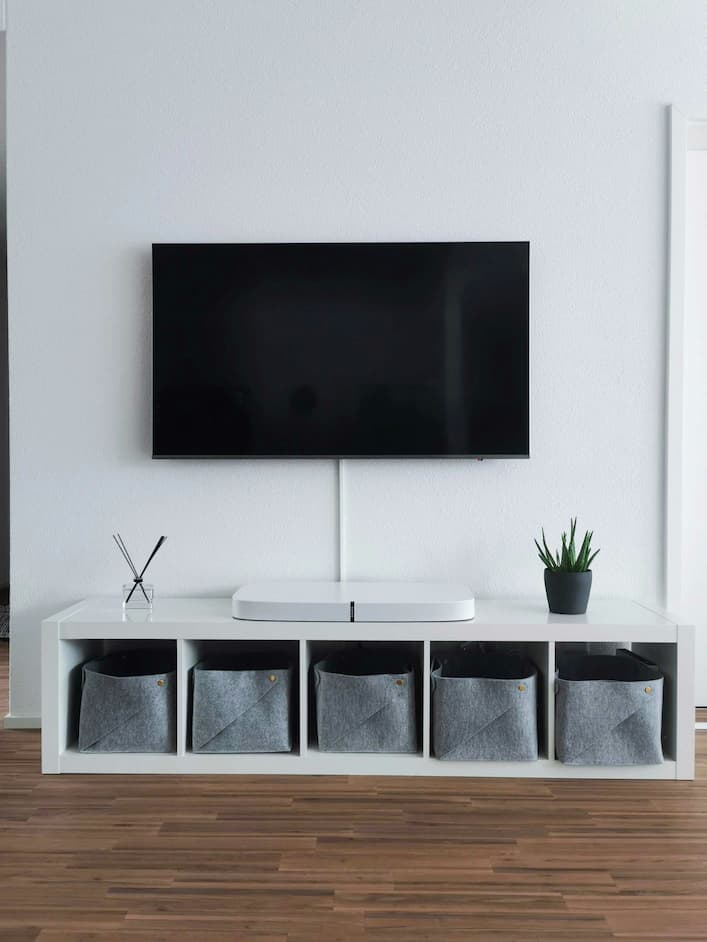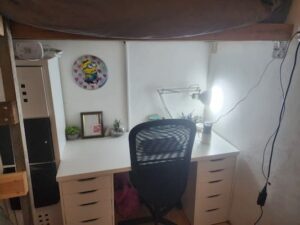With a dog who sprints through the house and one child who used to climb everything in sight, I quickly learned that home safety isn’t just about baby gates and outlet covers. TVs—especially the big flat ones—can be real hazards if they’re not secured properly. It only takes one jump, bump, or tug for a television to come crashing down, and the consequences can be serious.
After hearing too many stories about TVs toppling onto kids or pets, I knew wall-mounting ours wasn’t optional. It’s a small, relatively inexpensive step that offers huge peace of mind. If you have little ones or energetic animals in your home, this is one safety upgrade well worth making. Here’s what every parent and pet owner needs to know.

Picture this: you’re watching your favourite programme when suddenly there’s a tremendous crash from the living room. Your toddler has somehow managed to topple the massive flatscreen TV whilst your cat scrambles away from the chaos. This nightmare scenario plays out in thousands of homes across the UK every year, and it’s completely preventable with proper wall mounting.
I’ve seen firsthand how devastating these accidents can be. My neighbour’s three-year-old suffered serious injuries when their 50-inch television fell on him during what should have been a perfectly innocent Saturday morning cartoon session. The whole incident could’ve been avoided with a decent wall mount & some proper installation.
The Hidden Dangers Lurking in Your Living Room
Modern televisions are deceptively dangerous. Sure, they’re slimmer than ever, but they’re also getting bigger and heavier. That sleek 65-inch 4K monster sitting on your entertainment centre? It probably weighs between 25-35 kilograms. That’s enough to cause serious harm if it falls.
Children are naturally curious creatures. They pull on cables, push against furniture, and use TV stands as makeshift climbing frames. I think many parents underestimate just how easily a determined toddler can destabilise even seemingly sturdy furniture.
Pets present their own unique challenges. Cats love to perch on entertainment units, dogs get excited and bump into furniture, and don’t get me started on what happens when a hyperactive puppy decides to chase a ball behind the TV stand. The physics are simple: add enough force to an unstable object, and gravity will do the rest.
Understanding the True Cost of Accidents
The financial implications extend far beyond replacing a broken television. Hospital bills, time off work, insurance claims, and the emotional trauma of seeing your child or pet injured — these costs add up quickly.
According to recent statistics from the Royal Society for the Prevention of Accidents, furniture and TV tip-overs send approximately 2,000 children to A&E each year in the UK. Many of these accidents result in serious head injuries, broken bones, or worse.
But here’s what really gets me: most of these accidents are entirely preventable. A quality wall mount typically costs between £30-£150, depending on your TV size and the features you need. Compare that to the potential costs of an accident, and it’s a no-brainer.
Creating a Fortress of Safety Through Proper Installation
Not all wall mounts are created equal. I’ve made the mistake of buying cheap mounts online, thinking they’re all essentially the same. Wrong! The quality of materials, weight capacity, and installation hardware can vary dramatically.
Look for mounts with proper VESA compatibility (that’s the standardised mounting pattern on the back of your TV). Check the weight rating — and don’t just meet it, exceed it. If your TV weighs 30kg, get a mount rated for at least 40kg. Better safe than sorry.
Professional installation might seem like an unnecessary expense, but finding the wall studs, using the correct fixings, and ensuring everything is level requires skill and experience. I’ve seen too many DIY mounting jobs that looked fine initially but failed catastrophically later.
Choosing the Right Mount for Your Family’s Needs
Fixed mounts are the most secure option. They hold your TV flat against the wall with virtually no movement. Perfect for families with very young children who might try to pull or push the television.
Tilting mounts offer some adjustment whilst maintaining excellent security. They’re ideal if you need to angle the screen downward for better viewing from lower seating positions.
Full-motion or articulating mounts provide maximum flexibility but require more robust installation. They’re fantastic for rooms where you need to swivel the TV between different seating areas, though they do present more potential points of failure if not properly installed.
For homes with particularly active children or large pets, I’d recommend sticking with fixed or tilting mounts. The fewer moving parts, the less chance of something going wrong.
Cable Management and Additional Safety Considerations
Dangling cables are like candy to curious toddlers and playful pets. They pull, chew, and swing from them. Proper cable management isn’t just about aesthetics — it’s about safety.
Cable raceways or in-wall cable routing eliminate this hazard entirely. If that’s not possible, cable covers and clips can secure loose wires against the wall. I learned this lesson the hard way when my friend’s cat chewed through an HDMI cable and received a nasty shock.
Consider the height of your mounted TV carefully. Too low, and children might still be able to reach it. Too high, and you’ll strain your neck watching. The sweet spot is usually with the centre of the screen at eye level when seated.
Common Installation Mistakes That Compromise Safety
The biggest mistake I see is mounting into plasterboard without hitting wall studs. Plasterboard alone cannot support the weight of a large television, especially with the additional leverage created by a wall mount.
Using incorrect fixings is another common error. Those little plastic wall plugs that come with picture frames? They’re not suitable for TV mounting. You need proper wall anchors or, better yet, long screws into wooden studs.
Ignoring the TV’s centre of gravity is a rookie mistake. The mount needs to be positioned correctly relative to the TV’s weight distribution. This is particularly important for TVs with off-centre stands or unusual weight distribution.
Some people also forget to check their wall type. Cavity walls require different approaches than solid walls. Older homes might have unusual construction that affects mounting options.
Long-term Maintenance and Peace of Mind
A properly installed wall mount isn’t a “set it and forget it” solution. Regular checks ensure everything remains secure over time. I make it a habit to inspect my mounts every few months, checking for loose screws, signs of stress, or any other issues.
The peace of mind that comes with secure mounting is invaluable. You can actually relax whilst your children play nearby, knowing that your TV isn’t going to become a 30-kilogram projectile.
Think about it: how many times have you worried about your TV falling? How often have you told your children to be careful around the television? Proper wall mounting eliminates these concerns entirely.
Final Thoughts
Secure TV wall mounting isn’t just about creating a modern, minimalist look — it’s about protecting the people and pets you care about most. The relatively small investment in a quality mount and professional installation pays dividends in safety and peace of mind.
Don’t wait for an accident to happen. I’ve seen too many families learn this lesson the hard way. Your children’s safety and your pets’ wellbeing are worth far more than the cost of proper TV mounting. Make the investment today, and sleep better knowing you’ve eliminated one of the most common household hazards.




